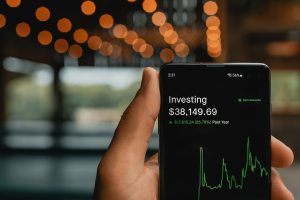Forex trading has become increasingly popular in recent years, with more and more people seeking to take advantage of the opportunities offered by the global currency markets. However, one question that often arises for those new to forex trading is, “How much does it cost to trade a standard forex lot?” In this article, we’ll explore the answer to this question in detail.
First, let’s define what a standard forex lot is. A standard lot is the unit of measurement used in forex trading, and it represents 100,000 units of the base currency in a currency pair. For example, if you’re trading the EUR/USD currency pair, a standard lot would be equivalent to 100,000 euros.
So, how much does it cost to trade a standard forex lot? The answer to this question depends on several factors, including the broker you’re using, the currency pair you’re trading, and the type of account you have.
Broker Spreads
One of the primary costs associated with forex trading is the spread. The spread is the difference between the bid price (the price at which you can sell a currency pair) and the ask price (the price at which you can buy a currency pair). Brokers make money by charging a small spread on each trade, which is usually expressed in pips.
The size of the spread can vary significantly between brokers, and it can also vary depending on the currency pair you’re trading. For example, the spread for the EUR/USD currency pair is typically lower than the spread for less popular currency pairs. The average spread for a standard forex lot can range from 1 to 3 pips, depending on the broker.
In addition to the spread, some brokers may charge a commission on each trade. This commission is typically a flat fee per lot traded, and it can range from a few dollars to several dollars per lot.
Currency Pair Volatility
Another factor that can impact the cost of trading a standard forex lot is the volatility of the currency pair you’re trading. Volatility refers to the magnitude and frequency of price movements in a currency pair. More volatile currency pairs tend to have wider spreads, which can increase the cost of trading.
For example, if you’re trading the GBP/JPY currency pair, which is known for its volatility, you may encounter wider spreads than if you were trading the EUR/USD currency pair, which is generally less volatile.
Account Type
The type of account you have can also impact the cost of trading a standard forex lot. Some brokers offer different account types, such as standard accounts, mini accounts, and micro accounts. These account types typically have different minimum deposit requirements, and they may also have different spreads and commission structures.
For example, a standard account may require a minimum deposit of $1,000 and may have a spread of 2 pips and a commission of $5 per lot traded. A mini account, on the other hand, may require a minimum deposit of $100 and may have a spread of 3 pips and no commission.
Calculating the Cost of Trading a Standard Forex Lot
To calculate the cost of trading a standard forex lot, you’ll need to consider the spread, commission (if applicable), and any other fees charged by your broker. Here’s an example:
Let’s say you’re trading the EUR/USD currency pair with a broker that has a spread of 2 pips and charges a commission of $5 per lot traded. If you buy a standard lot of EUR/USD at a price of 1.1800 and sell it at a price of 1.1850, your total cost would be:
Spread: 2 pips x $10 (the value of one pip for a standard lot of EUR/USD) = $20
Commission: $5
Total cost: $25
Keep in mind that this is just an example, and the actual cost of trading a standard forex lot can vary depending on the factors we’ve discussed.
Conclusion
In conclusion, the cost of trading a standard forex lot can vary depending on several factors, including the broker you’re using, the currency pair you’re trading, and the type of account you have. The primary cost associated with forex trading is the spread, which is the difference between the bid and ask price. Some brokers may also charge a commission on each trade. By understanding these costs and how they impact your trading, you can make more informed decisions about your forex trading strategy.






